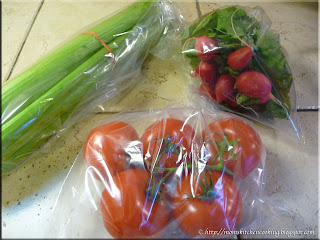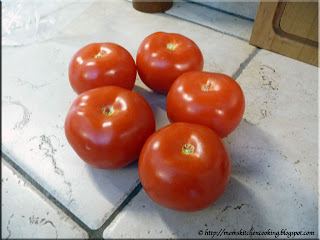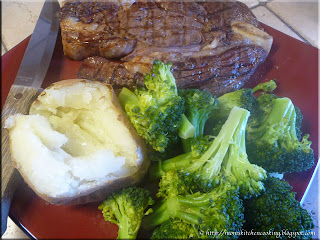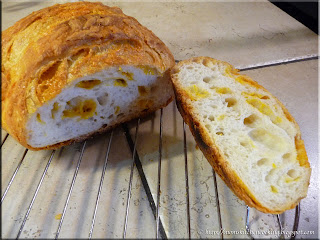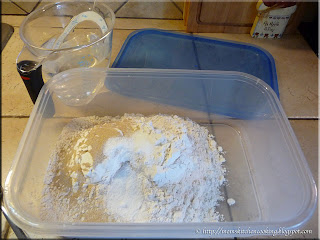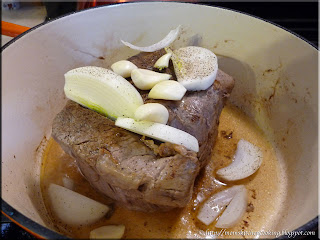One thing I love about being a food blogger is the excuse to try out new foods or food related products. Sometimes I am compensated for this of which is always noted in the post but the vast majority of the time, I am not compensated in any way. I like buying foods I haven't tried before but when it comes to food related products I like trying those products that are getting a bit of hype. They may be just new out or borderline gimmicky or simply a gimmick but part of the fun is testing them. Such is the case with the new President's Choice (Loblaw's store brand) Green reusable produce bags that absorb and remove ethylene gas that promise to extend the life and freshness of your fruits and vegetables.
Ethylene is a gas that is produced by ripening fruits and vegetable. The presence of ethylene from ripe produce will cause nearby ethylene sensitive produce to ripen faster. In fact, ethylene is sprayed onto tomato fields so the tomatoes ripen at once for harvesting. It is the reason why one bad apple can cause the entire bag to spoil and why you put bananas or other fruit into a closed paper bag to ripen faster. The premise behind this bags is, by absorbing any ethylene gas produced ripening will be slowed retarding spoilage.
I packaged freshly purchased celery, radishes and tomatoes in the reusable bags. Celery and radishes are usually stored as is from the grocery store in the crisper. Some leave them in the plastic produce bags. While the tops look nice on the radishes, they should be removed for refrigeration to prevent the radishes from spoiling. Tomatoes are always stored at room temperature out of direct sunlight. Note that I left the stem on the tomatoes as I always do for vine ripened tomatoes purchased at the grocery store. This tends to keep them fresh longer. I also leave home grown tomatoes on the vine when possible until I need them. The celery and radishes went into the refrigerator while the tomatoes were left on the counter.
Within a day and a half, I noticed condensation (3) in the the Green reusable bag with the tomatoes. Upon closer inspection I noticed mold on the stems (4) of the tomatoes. I cannot ever remember mold forming on the stems of tomatoes that I store on the counter! Unless we are away for an extended period of time, I always have fresh tomatoes sitting on the counter ready to use. In this case, the Green reusable bag was a fail and had I not noticed it as fast as I did, I would have lost the tomatoes as well.
I quickly removed the tomatoes from the bag, removed the stems and washed the tomatoes in a solution of water and vinegar to kill off any mold. I returned one cleaned tomato to the bag, then left the remainder sit open on the counter. After 2 days there was no difference between the tomatoes on the counter and the one in the bag.
The celery and radishes fared nicely in the bags but had no advantage over those stored open in the crisper. Neither produce ethylene gas so the results were as expected. I tried the bags on both apples and bananas. The look of the bag definitely took away from the look of my perpetual fruit bowl!
Ethylene absorbing bags are an expensive and unnecessary gimmick. They give the impression that all fruits and vegetables produce ethylene gas or are adversely affected by ethylene gas when in fact that is not the case. The PC Green reusable produce bags shows both basil and strawberries on the package, neither of which produce or are sensitive to ethylene nor should they ever be stored in plastic bags.
Ripening does not necessarily cause food spoilage but excess moisture certainly will. The ethylene absorbing bags are made of plastic. Most produce should not be stored in plastic because the high humidity reduces the storage life while increasing spoilage. Some have reported that storing bananas in the ethylene absorbing bags gives nice looking bananas that are actually rotted on the inside. Finally, the ethylene absorbing bags are only good for certain produce. Basically they may help protect ethylene sensitive foods from ethylene producing fruits and vegetables during storage. However, a properly maintained crisper will do the exact same thing by allow air flow that disperses any ethylene produced by some fruits and vegetables. In general, ethylene sensitive foods are refrigerated while ethylene producing fruits and vegetable really do not need refrigeration. If in doubt as to how to store, just visit your local grocery store. Notice how ethylene producing fruits and vegetables are not in the cooler section nor in the higher humidity produce section? That is the way they should be stored at home with the exception of parsley which should be place in cup of water, cut end down similar to flowers, on the counter. Sun exposure will help the cut parsley retain its beautiful green colour until used.
Ethylene producing fruits and vegetables - apples, apricots, avocados, ripening bananas, cataloupe, figs, honeydew, kiwi, mangoes, nectarines, papayas, peaches, pears, persimmions, plantains, plums, prunes, quince, tomatoes
Ethylene sensitive foods - unripe bananas, green beans, Belgian endive, broccoli, Brussels sprouts, cabbage, carrots, cauliflower, chard, cucumbers, eggplant, leafy greens, lettuce, okra, parsley, peas, peppers, spinach, squash, sweet potatoes, watercress, watermelon
The bottom line on the PC Green reusable produce bags - They are expensive and ineffective. While the bags are reusable after washing the reality is most buyers will not do so. Unlike the zipper style bags, these bags are thin so prone to being damaged in the fridge as well. I honestly don't see where the average consumer will get 12 uses out of each of these bags. If you are really concerned about ethylene sensitive foods, some can be stored in covered containers with paper towel on the bottom to absorb extra moisture. Quite frankly, I don't find storing any of the mentioned fruits and vegetables to be much of a problem either on the counter or in the refrigerator. The bags are of little help other than expensive storage for fruits and vegetables not affected by ethylene and they will definitely cause berries to spoil faster. Even if per change you were to get 12 uses per bag, the bags will more than likely end up in the landfill as they cannot be recycled in many communities. These bags get two thumbs down from me!







